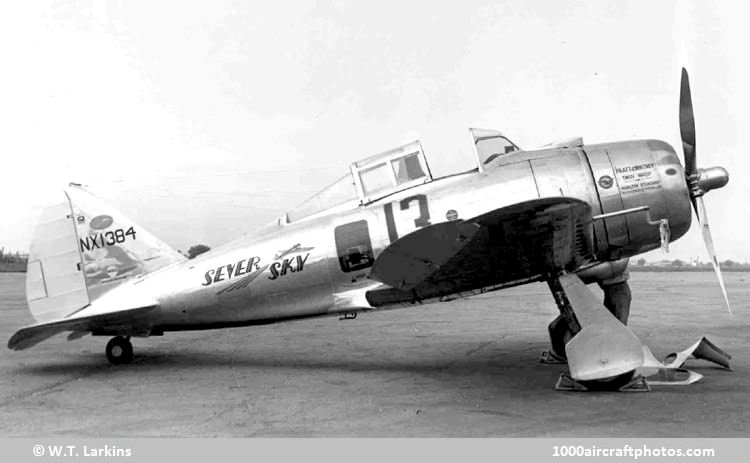04/30/2019. Remarks by Johan Visschedijk: "Representing an attempt to obtain maximum performance from the basic P-35 design without introducing radical changes, the AP-7 employed much of the airframe of the earlier AP-2 but was powered by a 1,200 hp Pratt & Whitney R-1830 Twin Wasp engine. As first completed early in 1938, the AP-7 reverted to the semi-retractable mainwheel arrangement of the P-35, and in this form was used by the celebrated aviatrix Jacqueline Cochran to capture the 1938 Bendix Trophy, having been used by Major Alexander P. de Seversky two days prior to this event to establish a new US transcontinental record with an elapsed time of 10 hr 3 min 7 sec.
The AP-7 was subsequently fitted with a new wing, with an improved leading edge profile, and an inward-retracting landing gear similar to that of the AP-2. Redesignated AP-7A, it was intended that the modified aircraft should participate in the 1939 Bendix Trophy contest, but was withdrawn after two aborted take offs. The fate of the aircraft is uncertain, one source claims it was destroyed in a hangar fire in Tampa, Florida, another source claims it was sold in a "highly irregular transaction" to Ecuador's Fuerza Aérea in 1941, together with the Seversky EP-1-68 demonstrator and the AP-9.
